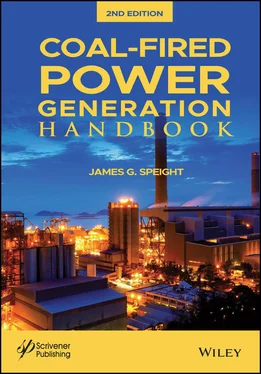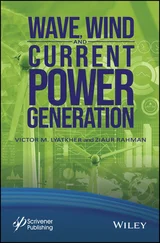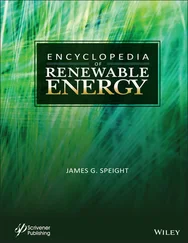652 657
653 658
654 659
655 660
656 661
657 662
658 663
659 664
660 665
661 666
662 667
663 668
664 669
665 670
666 671
667 672
668 673
669 674
670 675
671 676
672 677
673 679
674 680
675 681
676 682
677 683
678 684
679 685
680 686
681 687
682 688
683 689
684 690
685 691
686 692
687 693
688 694
689 695
690 696
691 697
692 698
693 699
694 700
695 701
696 702
697 703
698 705
699 706
700 707
701 708
702 709
703 710
704 711
705 712
706 713
707 714
708 715
709 716
710 717
711 718
712 719
713 720
714 721
715 722
716 723
717 724
718 725
719 726
720 727
721 728
722 729
723 730
724 731
725 732
726 733
727 734
728 735
729 736
730 737
731 738
732 739
733 740
734 741
735 742
736 743
737 744
738 745
739 746
740 747
741 748
742 749
743 750
744 751
745 753
746 754
747 755
748 756
749 757
750 758
751 759
752 760
Scrivener Publishing100 Cummings Center, Suite 541J Beverly, MA 01915-6106
Publishers at Scrivener Martin Scrivener (martin@scrivenerpublishing.com) Phillip Carmical (pcarmical@scrivenerpublishing.com)
Coal-Fired Power Generation Handbook 2nd Edition
James G. Speight

This edition first published 2021 by John Wiley & Sons, Inc., 111 River Street, Hoboken, NJ 07030, USA and Scrivener Publishing LLC, 100 Cummings Center, Suite 541J, Beverly, MA 01915, USA
© 2021 Scrivener Publishing LLC
For more information about Scrivener publications please visit www.scrivenerpublishing.com.
All rights reserved. No part of this publication may be reproduced, stored in a retrieval system, or transmitted, in any form or by any means, electronic, mechanical, photocopying, recording, or otherwise, except as permitted by law. Advice on how to obtain permission to reuse material from this title is available at http://www.wiley.com/go/permissions.
Wiley Global Headquarters
111 River Street, Hoboken, NJ 07030, USA
For details of our global editorial offices, customer services, and more information about Wiley prod-ucts visit us at www.wiley.com.
Limit of Liability/Disclaimer of Warranty
While the publisher and authors have used their best efforts in preparing this work, they make no representations or warranties with respect to the accuracy or completeness of the contents of this work and specifically disclaim all warranties, including without limitation any implied warranties of merchant- ability or fitness for a particular purpose. No warranty may be created or extended by sales representatives, written sales materials, or promotional statements for this work. The fact that an organization, website, or product is referred to in this work as a citation and/or potential source of further information does not mean that the publisher and authors endorse the information or services the organization, website, or product may provide or recommendations it may make. This work is sold with the understanding that the publisher is not engaged in rendering professional services. The advice and strategies contained herein may not be suitable for your situation. You should consult with a specialist where appropriate. Neither the publisher nor authors shall be liable for any loss of profit or any other commercial damages, including but not limited to special, incidental, consequential, or other damages. Further, readers should be aware that websites listed in this work may have changed or disappeared between when this work was written and when it is read.
Library of Congress Cataloging-in-Publication Data
ISBN 9781119510109
Cover image: Coal Power Plant (Keng Po Leung | Dreamstime.com) Cover design by Kris Hackerott
Set in size of 11pt and Minion Pro by Manila Typesetting Company, Makati, Philippines
Printed in the USA
10 9 8 7 6 5 4 3 2 1
This book describes the steps and challenges by which electricity is produced from coal and deals with the challenges for removing the environmental objections to the use of coal in future power plants. New technologies are described that could virtually eliminate the sulfur, nitrogen, and mercury pollutants that are released when coal is burned for electricity generation. In addition, technologies for the capture of greenhouse gases emitted from coal-fired power plants are described and the means of preventing such emissions from contributing to global warming concerns.
Also, the book introduces the use of the various types of biomass and waste that can be used for generating electricity at a commercial-scale facility rather than a utility-scale project. Biomass heat and biogas, including anaerobic digestion and landfill gas, are covered in other technology resource pages in this guide.
The book, which is written in an easy-to-read style and is also illustrated by diagrams and tables, describes the performance of power plants and the costs of power generation as influenced by many coal properties. Specifically, coal quality impacts not only coal cost but also net power output as well as capital and operating and maintenance costs and waste disposal costs. In fact, coal quality impacts the coal chain in a power plant and their relationship to power generation costs.
Part I of this book describes the steps and challenges by which electricity is produced from coal and deals with the challenges for removing the environmental objections to the use of coal in future power plants. New technologies are described that could virtually eliminate the sulfur, nitrogen, and mercury pollutants that are released when coal is burned for electricity generation.
Part II presents the various aspects of power generation including chapters on gas cleaning, clean coal technologies, and environmental issues arising from the use of coal.
Part III introduces the reader to the use of other fuels for the generation of electricity, including viscous feedstocks, biomass, and solid waste. A chapter relating to energy security and the future of power generation is also included.
There is also a comprehensive Glossary that will help the reader to understand the various terminologies that are used in this important energy field.
Dr. James G. SpeightLaramie, Wyoming August 2020
PART I ORIGIN AND PROPERTIES
1
History, Occurrence, and Resources
1.1 Introduction
An ever-expanding human population is matched by an ever-increasing demand for energy to the extent that the world is presently faced with the situation of energy demand exceeding the energy in circulation and the energy production even from a variety of sources (Speight, 2011a, 2020). The production and consumption of energy have been associated with adverse environmental impacts such that the United Nations conference in Kyoto, Japan, in 1997 had to have what is known as the Kyoto Protocol that sets limits on carbon dioxide emissions into the atmosphere (Hordeski, 2008; Irfan et al. , 2010).
Coal (the term is used generically throughout the book to include all types of coal), geographically spread across all inhabitable continents of the world, is a black or brownish- black organic sedimentary rock of biochemical origin which is combustible and occurs in rock strata (coal beds , coal seams) and is composed primarily of carbon with variable proportions of hydrogen, nitrogen, oxygen, and sulfur. Coal is the most plentiful fuel in the fossil family and, in the current context, the United States has more coal reserves than any other country in the world. In fact, one-fourth of all known coal in the world is in the United States, with large deposits located in 38 states, which represents almost as much energy in coal that can be mined as the rest of the world has in oil that can be pumped from the ground. Also, in the context of this book, the more efficient use of coal is the focus since electricity from coal represents more than 50% of current electricity generation in the United States.
Читать дальше













